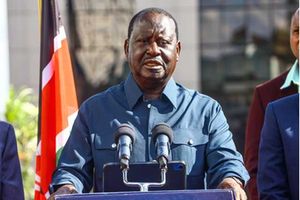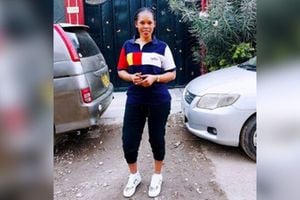Use Safari Rally success to market Kenya

Sebastien Ogier (left) and his navigator Julien Ingrassia celebrate their win during the award ceremony of the WRC Safari Rally in Naivasha on June 27, 2021
What you need to know:
- If these trends continue, aided by better regional reach in East and Central Africa, then the Safari can be turned into a major marketing tool for the promotion of domestic and international tourism on one hand.
- The government could use these figures to promote other sectors of the economy in need of foreign investments because sports is business as well.
Save for the General Elections and most of the time a tragic event, no other single event brought together Kenyans than the recent WRC Safari Rally.
It is widely believed that the Safari provided Kenya’s happiest moments in recent times at home and abroad.
Figures rolling in from social media platforms of the WRC Promoter and other independent sources confirm one thing: Nothing has stronger pulling power in this country than sport. Secondly, without a doubt, motorsport is now arguably the number one sporting discipline in Kenya.
A country with previous world-class sporting accolades, from Athletics, Rugby Sevens, and to a lesser extent Golf, has amazed itself by the international reception of a very successful WRC event in Naivasha last month.
The WRC Promoter, who on behalf of the FIA (International Automobile Association) commercially manages the global circuit, released the report of the media impact of the WRC Safari Rally.
The report revealed that Safari Rally registered the highest ‘Facebook’ impressions in the series’ 53 year history.
Add ‘WhatsApp’, ‘Instagram’ impressions, plus other media outlets, and this figure exceeded 120 million.
These Safari Rally figures may help the WRC breach the one billion ‘magical’ figure it has been striving to achieve ‘for far too long.
The Safari Rally info team scored 500 percent on all platforms over the world’s best. Also spectacularly, a domestic media house, ‘Nation Africa’ ranked in the top 15 globally and first in Africa in Safari Rally coverage and reach, only being bettered by outlets such as BBC News (GBR), Yahoo! Japan, Yahoo News (USA), Marca (ESP), India Today, Le Figaro (FRA), Yahoo! Sport (USA) and BBC Sport (GBR).
Additionally, Youtube recorded 16 million Safari Rally viewers. In Japan, the single most-watched scene of the Safari Rally in Kenya was 69 million people, who hit on the picture of Japanese Toyota Gazoo Racing Driver Takamoto Katsuta, racing through a section amid a trail by live TV helicopter.
The exposure by the Safari Rally as a scenic tourism destination broke previous expectations and it was ‘music to the ears of the Kenyan Government that committed huge resources to the event.
The unfortunate crash of one of the Rally competitors, Tejveer Rai, was watched by 1.2 million viewers. In terms of visuals, the Safari Rally outperformed other leading WRC events, namely Italy (Sardegna) by 3-1.
Locally, the ‘Nation’ Newspaper gave 25 million worth of free advertising to the Safari Rally. The estimates show that the ‘on site’ viewership was half a million people who lined up the route from (the central business district) Nairobi start, a super spectator stage on Kasarani suburbs to Naivasha, 110km away, and inside the spectator stages in national parks, private and community wildlife conservancies around Lake Naivasha.
The WRC Safari Rally was flagged off at the iconic Kenyatta International Convention Centre (KICC) by President Uhuru Kenyatta. Only Chile matched a Head of State performing the function.
If these trends continue, aided by better regional reach in East and Central Africa, then the Safari can be turned into a major marketing tool for the promotion of domestic and international tourism on one hand.
The government could use these figures to promote other sectors of the economy in need of foreign investments because sports is business as well.




